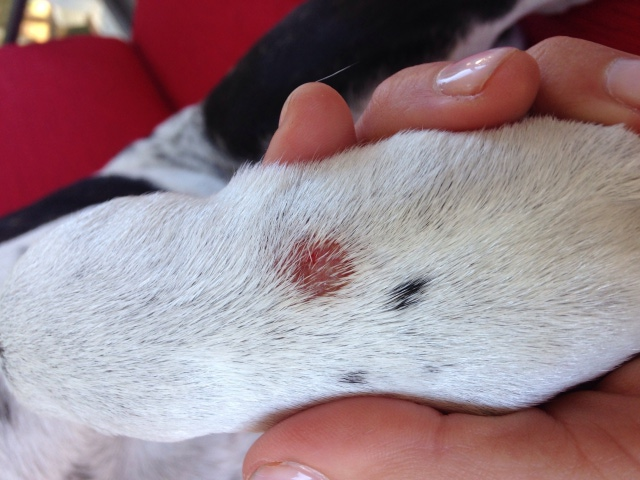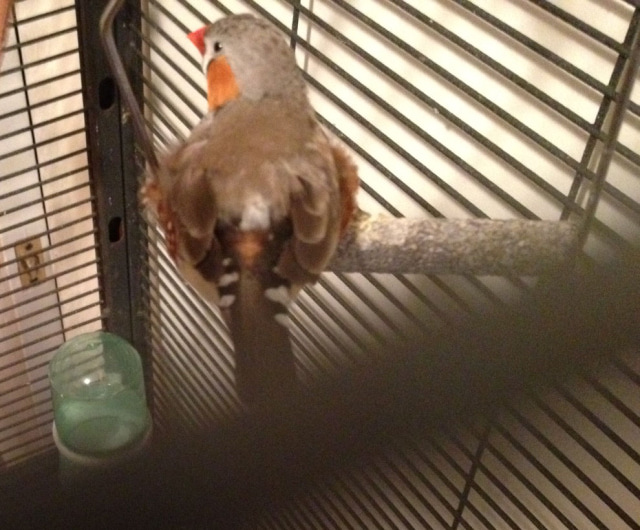Questioni bought 2 gerbils a few months ago. ones nose has been red and bloody for a
while now and rubbing at it alot. i tried changing the bedding to carefresh and
it didnt do anything to help it. i dont hav much money to take her to a vet and
everything... so i was hoping for a home remidy. someone told me putting
neosporin on her nose would help but i thought it may be to toxic for her. we
did hav homemade furniture made out of untreated plywood birch but we took
it out today to see if it would make a difference. any advice one wat to do about
a poor girbil
AnswerSince Gerbils are illegal in California we have only seen them once about 20 yrs ago with someone passing through the state.
Needless to say, I don't know much about them.
The Merck Veterinary Manual has plenty to say, however, and here is the entry I found on what you described:
"Facial Dermatitis (Nasal Dermatitis, Sore Nose):
In juvenile and adult gerbils, environmental stressors such as incompatible cagemates, high humidity, and overcrowding cause release of Harderian gland porphyrin secretions around the external nares and eyes. Accumulation of the reddish-brown porphyrin pigment causes skin irritation and eventually leads to self-trauma, localized alopecia, and moist dermatitis with erythema, scabs, and ulceration. Staphylococcus saprophyticus , S xylosis , and S aureus may secondarily invade and exacerbate the dermatitis, spreading to the forepaws and ventral thorax and abdomen. Skin lesions are pruritic and frequent scratching may result in bleeding. Infection may also extend to the maxillary sinuses. The condition may be self-limiting with spontaneous recovery or, more often, progressive with bacterial infection. With accumulating effects of disease, affected gerbils develop anorexia and adipsia, lose weight, and may die. Diagnosis is based on clinical signs and isolation of secondary bacteria. Treatment includes carefully cleaning the skin lesions and applying topical antibiotics (chloramphenicol 1% ophthalmic ointment, tid-which is three times a day). Prevention requires careful control of environmental temperature and humidity or other sources of stress and providing sand baths or clay bedding.
Alopecia:
Patchy facial hair loss may result from constant rubbing on metal cage feeders or excessive burrowing behavior. Alopecia and lesions around the tail and hindquarters may result from cage overcrowding, fight wound trauma, and barbering (hair chewing by cagemates). Improper handling may cause tail fur loss or skin slipping. The underlying exposed tail becomes necrotic and requires amputation with cautery. Prevention includes correcting adverse environmental conditions and separating affected animals. Gerbils should only be handled by the base of the tail to prevent degloving.
Rough Hair Coat:
A rough and matted hair coat often indicates excessive environmental humidity (>50%). This condition is often observed in gerbils housed in solid-topped aquariums or cages. It can be prevented by providing adequate air exchange to remove excess environmental moisture."
I added a few more for you. You should go get a tube of this from the vets.It should only cost about $5. or so and if kept in the refrigerator, it will last a long time.
That is about all I can offer you at this point. You might want to search for gerbil groups online and post this question there as well.

 Chocolate Lab feeding
QuestionMy lab is 5 months old and weighs 50 lbs. He is
Chocolate Lab feeding
QuestionMy lab is 5 months old and weighs 50 lbs. He is
 5 year old Chihuahua suddently farting a lot
QuestionQUESTION: Hi,
My question is about my 5-year o
5 year old Chihuahua suddently farting a lot
QuestionQUESTION: Hi,
My question is about my 5-year o
 Where do I begin?!
QuestionGranuloma
Staph
QUESTION: Hello!
Where do I begin?!
QuestionGranuloma
Staph
QUESTION: Hello!
 My Finch Had an Incident and Im Not Sure What To Do
Question
Injury Spot on Male Fi
Dear Jana Connel
My Finch Had an Incident and Im Not Sure What To Do
Question
Injury Spot on Male Fi
Dear Jana Connel
 LABRADOR HEIGHT
Question
TOBO
MY LABRADOR IS NOW 5 MONTHS OLD....
HIS H
LABRADOR HEIGHT
Question
TOBO
MY LABRADOR IS NOW 5 MONTHS OLD....
HIS H